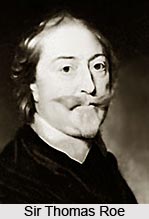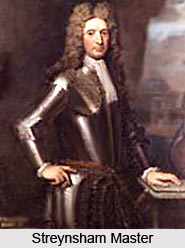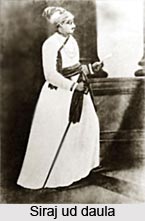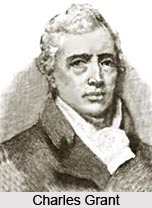 Englishmen had long since entered India with the plan to spread Christianity, much before the East India Company had landed with the aim to trade. Religious and missionary activities of the Britons needed a proper guiding line to ground themselves steadfastly. Traces can be found in the early 16th century, when missionaries were sent to Mughal courts to impress upon the emperors. That constituted the first phase of Christian missionary activities, which later was aided by the Company traders and officials. Reverends, evangelists, clergymen and preachers were sent to India to make people have faith in Catholicism, by the process of constructing churches in various key centres. The port cities of Madras, Bombay and Calcutta were the Britishers` primary target in spreading religion and missionary activities accurately.
Englishmen had long since entered India with the plan to spread Christianity, much before the East India Company had landed with the aim to trade. Religious and missionary activities of the Britons needed a proper guiding line to ground themselves steadfastly. Traces can be found in the early 16th century, when missionaries were sent to Mughal courts to impress upon the emperors. That constituted the first phase of Christian missionary activities, which later was aided by the Company traders and officials. Reverends, evangelists, clergymen and preachers were sent to India to make people have faith in Catholicism, by the process of constructing churches in various key centres. The port cities of Madras, Bombay and Calcutta were the Britishers` primary target in spreading religion and missionary activities accurately.
In 1519, Father Thomas Stevens, or Stephens, (c. 1549-1619) arrived in Goa as the first British Missionary to India.
The first phase of Christian missionary activities had started to flow in to the staunch Indian community, a country where religious customs came above the importance of life.
In 1601, as a practice initiated from the time of the first voyage, prayers were said every morning and evening in every ship. The Company entrusted to the Pursuer a copy of The Bible and the Book of Common Prayer.
1609 witnessed the historic union of the East India Companies into the United Company of Merchants of England trading with the East Indies. The subsequent charter provided for a minister for every garrison, specified a place of worship to be constructed and that all clergy going to India required the approval of the Archbishop of Canterbury or the Bishop of London.
In 1614, Reverend Edward Terry (1590-1660), a Company chaplain, served from 1617-19 with Sir Thomas Roe (c.1590-1644). Roe was the British ambassador to the Mughal Court at Ahmedabad.
 In the same year, a captain of an East Indiaman returned to England with a young Indian man. The Company had him educated and saw that he was given religious instruction. With the Lord Mayor of London and the Company Directors present, he received baptism and was given the name of Peter by James V.
In the same year, a captain of an East Indiaman returned to England with a young Indian man. The Company had him educated and saw that he was given religious instruction. With the Lord Mayor of London and the Company Directors present, he received baptism and was given the name of Peter by James V.
In 1647, Reverend William Isaacson arrived in Madras, where he served as the first Company chaplain until 1657. He handled the question of the baptism of children of mixed marriages, in some instances by conditional re-baptism.
In 1657, with the execution of Cromwell`s renewed charter for the British East India Company, the Court of Directors refused to make appointments of new clergy assigned to India for the next five years. The Company opposed the selection of fanatical non-conformists and tried with little success to seek orthodox clergymen licensed by the Universities of Oxford or Cambridge.
In 1662, the Company at Bombay published a policy of strict religious toleration. It allowed for no compulsory conversion, no interference with Indian religious practices and that cow killing was forbidden in Hindu areas.
In 1675, the East India Company`s Court of Directors noted that in the absence of English clergy at Madras, Roman Catholic priests had carried out weddings, burials and baptisms. The Madras Council was brusquely instructed to end such activities. Additional concern emerged over children of English and Portuguese parents being brought up as Roman Catholics rather in the Protestant religion. This further aided to spread Christian missions, which was the primary aim of new British in India.
Within the days of 14th to 15th December 1677, the East India Company convened a meeting of the Agent and Council of Bengal to examine James Harding and Samuel Hervey on charges of atheism. Following an examination of the evidence and listening to personal testimony, both men were declared innocent.
On 1678, Reverend J. Evans arrived in Hooghly as the first Company chaplain in Bengal.
On 28 October 1680, Reverend Richard Portman, Company chaplain, consecrated St. Mary`s Church in Madras as the first Anglican Church in India. Streynsham Master (1640-1724) provided much of the encouragement and organisation for this project.
In 1687, the East India Company charged a Portuguese Roman Catholic Priest in Bombay with high treason for converting Nathaniel Thorpe to the Catholic Church. John Vaux, Judge of the Court of Judicature, jailed the priest and charged him under Acts of Parliament passed in the reigns of Elizabeth I and James I.
 Within the period of 1694 to 1695, Reverend Humphrey Prideaux, later the Uean of Norwich, prepared a plan for the establishment of missionaries in India and a programme for an Anglican Church establishment. His thoughts touched on the initiation of missions, establishment of a seminary, training in the Indian languages and the future action of a bishop.
Within the period of 1694 to 1695, Reverend Humphrey Prideaux, later the Uean of Norwich, prepared a plan for the establishment of missionaries in India and a programme for an Anglican Church establishment. His thoughts touched on the initiation of missions, establishment of a seminary, training in the Indian languages and the future action of a bishop.
In 1698, the Company`s new Charter included a clause which provided for the Archbishop of Canterbury or the Bishop of London to appoint chaplains to the port cities of India. It further sought the religious instruction of the Hindus employed in the Company`s service.
In the same year in England, the Society for the Promotion of Christian Knowledge and later in 1702, the Society for the Propagation of the Gospel in Foreign Parts began missionary efforts. Their initial involvement in India appeared as financial aid to Danish missionaries located at Tranquebar.
In 1700, a small Roman Catholic church was constructed in Calcutta. The first phase of Christian missionary activities had already come into being with the British giving in every effort to make their religion acceptable.
During the time of June 1700, Reverend Benjamin Adams became the first chaplain to take up ministerial duties in Calcutta.
On 5th June 1709, Reverend William Owen Anderson consecrated St. Anne`s Church, the first Anglican church constructed in Calcutta. Later in 1756 it was destroyed during the capture of Calcutta by Siraj-ud-daula (1733-1757), Nawab of Bengal.
On 25th December 1718, under the leadership of Reverend Richard Cobbe, Company chaplain, an Anglican church in Bombay was opened for worship.
In 1726, Reverend Benjamin Schultz (1689-1760), a Danish Lutheran Missionary, relocated to Madras to establish an English mission. The Society for Promoting Christian Knowledge in London supported him with a salary of 60 pounds per year.
Within the prolonged period of 1728 to 1825, the Society for Promoting Christian Knowledge provided support of several German missionaries, including Reverend Benjamin Schultz (1689-1760) in Madras and at Tanjore, Reverend Christian Frederick Schwartz (1726-1789) and Reverend John Caspar Kohihoff. In 1825 the Society for Propagation of the Gospel assumed control of the Society for Promoting Christian Knowledge missions in South India.
 Until the time of 1746, the East India Company had possessed reasonable relationships with the Roman Catholics residing in Madras and elsewhere in south India. At the French capture of Madras in 1746, the local Catholics had demonstrated a treachery, however, which dampened relations. In 1749, when the Company returned to power in Madras, the Catholics were expelled.
Until the time of 1746, the East India Company had possessed reasonable relationships with the Roman Catholics residing in Madras and elsewhere in south India. At the French capture of Madras in 1746, the local Catholics had demonstrated a treachery, however, which dampened relations. In 1749, when the Company returned to power in Madras, the Catholics were expelled.
Within the years of 1750 to 1789, Reverend Christian Frederick Schwartz (1726-1789) served the Danish mission in south India. From 1762, the British East India Company also employed him as a chaplain. He began churches in Trichinopoly (present day Tiruchirappalli, Tamil Nadu), Tanjore and Palamcotta. He accompanied the Company`s European troops in the field as needed.
In 1786, the arrival in Calcutta of Reverend David Brown (1763-1812) as Company chaplain initiated a new phase of Christianity and missionary in India. It marked the beginning of a great missionary effort to the Indians which was to lay the foundations of the Indian Church. Missionary and religious activities by British appeared to be on the rise, as Christianity was turning a household name in India.
Within the period of 1787 1793, Charles Grant (1746-1823), a director and later chairman of the East India Company, took a position of increasing support for the introduction of Christianity into India. In 1787 he published a paper entitled A Proposal for Establishing a Protestant Mission in Bengal and Bihar. In 1792 he wrote Observations on the State of Society among the Asiatic Subjects of Great Britain. Here, he promoted Christianity as the resolution to the evils and oppressions of Islam and Hinduism.
On 24th June 1787, Reverend William Johnson and Reverend Thomas Blanshard, Company chaplains, consecrated St. John`s Church in Calcutta. It replaced St. Anne`s which had been destroyed by Siraj-ud-daula in 1756.
In 1789, Reverend Abraham Thomas Clarke became the first Englishman appointed as a missionary to India. A graduate of Trinity College, Cambridge, and Curate of the Society for Promotion of Christian Knowledge appointed him to serve in Calcutta. This action flew in the face of formal Company policy banning missionaries which was not modified until the Charter Act of 1813. It demonstrated, however, the flexibility and difference in view of local Company officials.



















